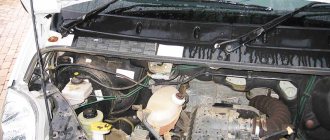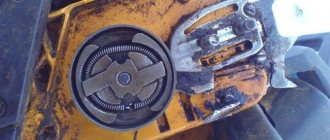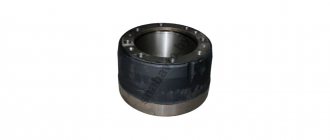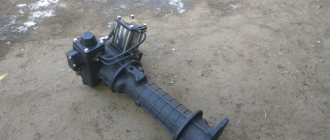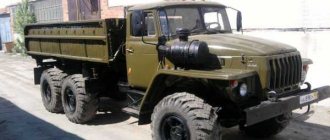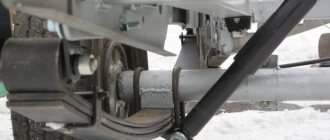A little history
ATTENTION! A completely simple way to reduce fuel consumption has been found! Don't believe me? An auto mechanic with 15 years of experience also didn’t believe it until he tried it. And now he saves 35,000 rubles a year on gasoline! Read more"
Peugeot Boxer replaced the J5 model. It appeared in 1994, after the successful development of the Sevel enterprise, which attracted qualified specialists from Fiat and Peugeot Citroen. As a result of this collaboration, it was possible to produce three cars identical in exterior and design, but different in terms of technical capabilities: Fiat Ducato, Peugeot Boxer and Citroen Jumper.
Read more: Reupholstering the dashboard with leather
Versions and engines
In this case, we are interested in the Boxer, which had 4 main modifications. In other words, the Peugeot Boxer was produced both as a van and as a light-duty truck, simply as a chassis, and, of course, as a minibus for passenger transport.
Power plants deserve special attention. Interestingly, the lineup includes 5 diesel engines with different cubic capacity and power. There was also one 2.0 liter gasoline unit with a capacity of 110 horses. As for the transmission, it was equipped with a 5-speed manual transmission or a 4-speed automatic transmission.
Boxer body
The body is that part of the car that many experts consider the most important, decisive for the buyer’s choice and the technical capabilities of the vehicle, in particular.
- The body length of the “French” could be different, depending on the modification, but did not exceed 638 cm.
- The Boxer's 202cm width provided good roominess.
- The height of the Peugeot Boxer frame could also be different, depending on the modification, but did not exceed 286 cm.
An interesting thing about the body theme is the change in style, carried out eight years after the release of the first Boxer. The modernization affected the buffers, the radiator grille and some of the interior. Specifically, this is what happened.
- Optics appear that are larger than before.
- Plastic linings on the body are used on both sides.
Regarding the general semi-restyling: new power plants are appearing.
Second generation
The Boxer experienced a real restyling in 2006, when the second generation of the “French” was officially introduced. It is still produced in factories in Europe. An interesting analogue of the Boxer is produced by a Mexican plant called Peugeot Manager, as well as a Russian analogue assembled from imported vehicle kits.
The second generation underwent virtually no changes, except for the engines. Power plants were initially installed in two versions: a 2.2-liter diesel engine with 101 and 120 horses, as well as a 3-liter diesel engine with 158 horses.
Six years ago they were replaced by motors with more advanced capabilities and better efficiency. In particular, we are talking about 2.2- and 3-liter units with different capacities.
Instructions for changing engine oil in a Peugeot Boxer engine yourself
The Peugeot Boxer is a minibus that has been produced by Groupe PSA since 1994. Nowadays, there are two generations of this car, each of which has undergone restyling. The first generation was modernized in 2002, and the second modification in 2014. This vehicle has many different models, which is perfect for both transporting large cargo and carrying passengers. The platform of this machine is also used for mobile homes. Almost identical to this car are the Fiat Ducato and Citroen Jumper, our today's topic also fits them. The Boxer line of engines provided the buyer with quite a large choice. These are mainly diesel engines with different volumes; you could also choose a gasoline power unit. The Peugeot Boxer has earned credibility among motorists due to its comparative ease of maintenance.
The manufacturer did not recommend a specific lubricant for changing the oil in the Peugeot Boxer engine.
Oil change intervals
As we mentioned above, the manufacturer offered Peugeot Boxer buyers a range of engines to choose from. In the first generation, the manufacturer installed 1.9, 2.0, 2.4 and 2.8-liter diesel engines and a 2.0-liter gasoline engine on the Boxer. In the second generation, Peugeot improved the range, engine sizes became smaller, and the number of modifications, on the contrary, increased. On this model you could choose between 2.2 and 3.0 liter diesel engines. The petrol one did not live up to its expectations and was excluded from the second modification.
All Boxer model motors are quite durable and will not give you enormous problems if they are properly cared for and maintained.
- First, fuel. Always refuel your car only with high-quality fuel at trusted gas stations. Also, during operation, always keep the fuel level in the fuel tank not below the middle.
- Secondly, timely replacement of consumables, including engine oil and oil filter. According to the Peugeot Boxer maintenance regulations, the engine oil and oil filter are replaced every 20,000 kilometers or once every 12 months, whichever comes first. But if your car regularly transports heavy loads, then the change can be carried out earlier, about 15,000 kilometers.
Filling capacity of Peugeot Boxer engines
Previously, we looked at what engines are installed on the Peugeot Boxer. Now, let's talk about the amount of lubricating fluid that you need to buy before carrying out the change procedure. If you are the owner of the first generation of this car, then when changing the engine lubricant on a 1.9 liter engine. you need to stock up on 5.5 liters of oil. A 2.0-liter diesel engine requires about 5 liters of lubricant for normal operation. A 2.4-liter engine needs 9.5 liters. The 2.8-liter engine requires 7 liters of oil.
The owner of the Boxer 2 car needs to prepare the following volumes:
- for a 2.2-liter power unit marked P22DTE - 6.5 liters of lubricant;
- DW12UTED – 6 liters of lubricant;
- 22DT – 6.3 liters of oil;
- A 3.0 liter engine requires 7 liters of lubricant.
If you carry out maintenance yourself, you must constantly monitor the oil level in the engine. This is quite easy to do. Checking the oil level is done using a dipstick. For normal operation, it is required that the indicator on the dipstick be halfway between o and “MIN”.
Selecting the right lubricant
There is no specific oil recommended by the manufacturer, but there are a number of requirements that it must meet. Castrol EDGE 5W-30, Mobil 1 ESP Formula 5W-30, Liqui Moly 5W-30, Motul Expert 5W-30, Shell Helix Ultra 5W-30 meet the factory recommendations. You can also use 5W40 viscosity from the same manufacturers and models.
How to change engine oil in a Peugeot Boxer with your own hands
Tools required for changing
To carry out the oil change procedure on your own, you will need the following tools and consumables:
- First, you need to stock up on the materials that you will change, namely: new lubricant taking into account the required displacement, a new oil filter and a new gasket for the drain bolt.
- Secondly, this is the tool that you will need to carry out the procedure. This is a puller for removing the old filter, keys for removing the engine protection and unscrewing the drain hole.
- You will also need a vessel into which you will drain the waste.
Replacement algorithm
First, warm up your car's engine. This must be done so that the waste flows out easily from the sump and engine. After this, place an empty container for used oil under the pan and unscrew the drain plug. Also unscrew the filler cap, this will reduce the time it takes to drain the old oil. At first, the oil will flow quite quickly, but then in drops until it drains from the entire power unit.
While the waste fills the container, you can remove the old oil filter and install a new one. But before installing a new filter, you need to pour approximately 150 grams of new oil into it and only then install it in place. After the power unit of your car is completely free of waste, tighten the drain hole with a bolt. Next, fill in new engine oil and tighten the filler plug.
After the change, let the machine run for about 15 minutes, then check the level with the engine turned off.
Instructions for changing engine oil in a Peugeot Boxer engine yourself Link to main publication
vibormasla.ru
Technical characteristics of the Peugeot Boxer in the Chassis+cab or Chasis Cab modification
| Boxer 335 | Boxer 435 | Boxer 440 | |
| Motor type | Diesel | Diesel | Diesel |
| Number of cylinders | 4 | 4 | 4 |
| Engine volume, cm3 | 2198 | 2999 | 2999 |
| Engine power, hp | 130 | 130 | 130 |
| Suspension | Independent/spring | Independent/spring | Independent/spring |
| checkpoint | 6 manual transmission | 6 manual transmission | 6 manual transmission |
| Maximum speed, km/h | 155 | 155 | 152 |
| Body length, mm | 5943 | 6308 | 6308 |
| Body width, mm | 2050 | 2050 | 2050 |
| Body height, mm | 2153 | 2153 | 2153 |
| Body weight, kg | 1845 | 1840 | 2220 |
Dimensions, exterior and everything related to the body
The overall dimensions of modern versions of the Peugeot Boxer, now available in 3 modifications, have respectively 3 wheelbase options: 3000/3450/4035 mm.
If the width of the Boxer car frame is 2050 mm, then, as a rule, there are two types of body height: 2245 and 2764, if the chassis is 2153. The length options for modern bodies are different.
The frames may also differ in internal cubic capacity, in particular when it comes to vans. Typically, the volume is 8-11.5 cubic meters. m with an internal height of 162-217 cm.
As mentioned above, the Italian Fiat designers also worked on the appearance of the Boxer’s frame. Their capabilities, tastes and preservation of past traditions have long been known and are not questioned by anyone. Although, this time they decided to deviate a little from the classic options. Specifically, the standard cubic van design has been modified like this.
- A massive bumper and an integrated radiator grille in the form of a letter were put on the frame
- On top of the bumper, as they say, above the “lip,” there is a hood.
- Optics have received more complex forms.
- The windshield turned out to be wide, giving better visibility thanks to the low glazing line.
- The body frames of the wheels stand out with their developed shapes.
- The rear view mirrors are large and vertical in shape.
- In addition to the 2 front doors, the minibus also has a sliding door on the right, giving access directly to the main salon.
- The rear bumper has a loading step, which makes loading cargo much easier.
- On the top version, a brake light is installed above the doors.
- Cabin 3-seater. In addition to the driver, two passengers can freely fit.
Read more: Wolf oil reviews 5w50
Transmission fluid selection
If there is insufficient oil in the manual transmission, the component mechanisms of the box will quickly become unusable. The result of this is a decrease in the level of comfort when driving a car.
What kind of oil should I put in a Peugeot Boxer manual transmission? Transmission oil is filled into the box on the minibus for the entire service life. Despite this, car owners change the fluid at 90,000 km. It is necessary to select oil so that the viscosity level is 75W-80. In particular, you can refuel your Peugeot with TOTAL TRANSMISSION BV 75W-80. The filling volume in the 6-speed manual transmission is 2.7 liters. Taking this into account, about 3 liters are consumed during replacement. It should be noted that this oil tolerates the loads well.
Thus, the Peugeot Boxer is distinguished by ease of operation and inexpensive maintenance. For preventive purposes, you need to regularly monitor the level of transmission fluid. Timely replacement of Peugeot Boxer gearbox oil allows you to protect the component elements of the gearbox from wear.
The stable operation of vehicle systems is due to timely care on the part of the vehicle owner. Changing the oil in a Peugeot Boxer provides the parts in the box with a significant extension of their service life. Although the automaker claims that the transmission fluid is filled for the entire service life of the minibus, many periodically practice the procedure for updating it. Over time, oil loses its original properties and ceases to perform its functions, and mechanisms require regular protection against wear.
Other famous Peugeot models
Thanks to the Boxer, Peugeot has clearly consolidated its position in the Russian market. But domestic buyers are also aware of other models from this manufacturer that have proven themselves well in terms of passenger and cargo transportation.
For example, the Peugeot Partner is a utility vehicle designed for use in small businesses and is incredibly popular among businessmen. Partner entered serial production two years after the release of Boxer.
It is noteworthy that, like Boxer, Partner is still original. Completely non-classical overall dimensions, different functional equipment for this segment, other technical capabilities - all this cannot leave the amateur motorist indifferent. And this is proven by the Partner’s successful sales in many countries around the world.
The partner is undergoing a radical restyling in 2002. Its second generation is coming out, which has received a higher level of comfort, modern technologies, etc.
Another car from a French company known to Russians is the Peugeot 308. Today it comes in a hatchback body. They worked well on the exterior of the new generation, achieving sweeping and stylish lines.
It is no coincidence that the Peugeot 308 was named the best car of 2014 according to CY. The buyer will be captivated by the noble design of the car, which is bold and sophisticated. The width of the wheel arches and the low center of gravity reflect the dynamism of the company and its growth. The sporty rims of the body, fully adapted to the mechanical component, make one believe in the success of the car.
308 can also captivate with its optics, its shapes and capabilities. The hand of famous designers is visible here too. Their appearance goes far beyond established automotive standards.
For example, the front lights are chosen in such a way that they beautifully emphasize the design of the radiator grille, merging with it into a single whole. The result is a unique “cat-like” look that is captivating for many lovers.
Originality was also demonstrated in the creation of rear headlights, where SVD technology was used.
The body of the new 308 is a different story. As you know, the car assembly is based on the EMP2 platform, which has proven itself well. Thanks to her, the frame received compact dimensions. In particular, more than 4 meters in length, which is quite compact for a cargo-passenger vehicle. The weight of the 308 also became less by 140 kg.
Body repair "French"
Peugeot cars have proven all over the world not only their beauty, originality and power, but also their reliability. Today it will be possible to quickly and inexpensively, and most importantly, effectively eliminate defects in the body of these cars.
Like any other car, the body of a Peugeot may require major, medium or minor repairs, as well as metalwork operations. Any body repair of this car must be accompanied by reliable diagnostics and compliance with control points.
As a rule, the most popular bodywork procedure for Peugeot cars is painting. Cars get into accidents and require restoration work after the accident. In most cases, the geometry of the body is not violated; the owner is limited to cosmetic repairs, including straightening and painting work of varying complexity.
Note that the skeleton of Peugeot cars is assembled in accordance with all the rules of modern safety. We are talking about preparing special zones of the body, which, when crushed during an impact, thereby absorb the energy of the wave. This saves passengers from serious injury, which has been proven more than once, not only in crash tests, but also in practice.
Repairing a car body is a complex operation that requires special skills and knowledge. Our website gives you the opportunity to take advantage of useful recommendations from professionals. The instructions are written in clear language, without the use of technical terms. All publications contain vivid photographs that provide visual understanding.
Forget about fines from cameras! An absolutely legal new product - Traffic Police Camera Jammer, hides your license plates from the cameras that are installed in all cities. More details at the link.
- Absolutely legal (Article 12.2);
- Hides from photo and video recording;
- Suitable for all cars;
- Works through the cigarette lighter connector;
- Does not cause interference to radios and cell phones.
The French Peugeot Boxer is a very popular commercial van model in the Russian Federation and the most dangerous competitor to the domestic GAZelle. Since the beginning of 2000, Russia has become one of 3 places where cars are produced. The reasons for the success of the car on the world market are the high comfort, excellent build quality and optimal dimensions of the Peugeot Boxer.
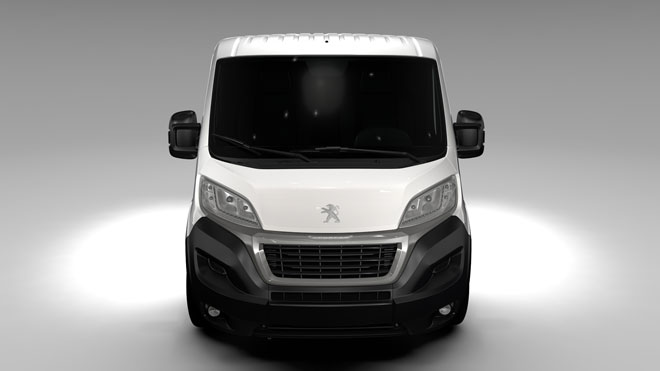
Design and dimensions of the Peugeot Boxer
The car is designed in such a way as to eliminate the maximum accumulation of dirt and dust in hard-to-reach places. Most of the material is galvanized steel, which is applied in several layers of a protective composition. This allows you to reliably protect the machine from corrosive processes. Additional chassis strength is achieved through increased structural rigidity.
Regardless of the dimensions of the Peugeot Boxer, the front suspension of the car does an excellent job of adjusting maneuverability and cornering. Even the starting equipment of the car in question includes hydraulic power steering, an ABS system, an overtaking indicator, and a rear view camera. Additionally, the models are equipped with ultrasonic detectors, an anti-slip system and other options typical for modern cars.
Peugeot Boxer 1
1994 was the premiere year for the Peugeot Boxer. Initially produced as a light-duty truck, van, chassis, minibus. Until 2006, the model did not undergo significant changes. Characteristic features of the first Boxer family:
- five-speed high-reliability transmission, manual or 4-speed automatic;
- independent suspension of a lever-spring system located at the front, at the rear - a dependent arrangement with longitudinal springs;
- transverse arrangement of the motor;
- it is based on a powerful frame-body load-bearing chassis;
- rack and pinion steering system.
Read more: Car gas reducer diagram
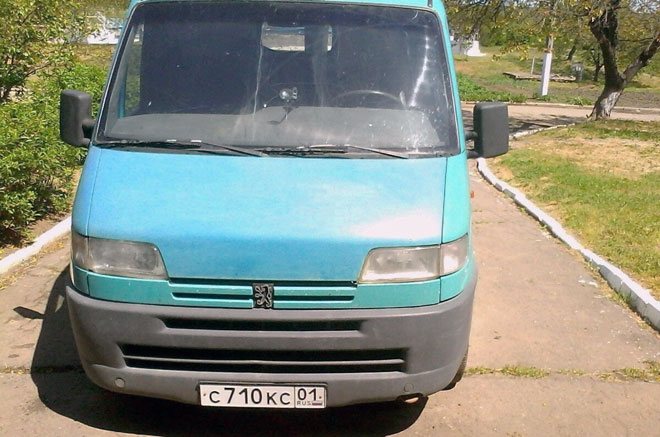
In terms of external characteristics, the overall dimensions of the Peugeot Boxer were somewhat different from their second-generation counterparts:
- height varies from 215 to 286 cm;
- length 475–560 cm;
- the width is slightly more than 202 cm;
- the distance between the axles of the front and rear wheels is from 285 to 370 cm.
The weight of the Boxer in its various modifications is 2900–3500 kg.
At the beginning of the 2000s, the Boxer was slightly modernized. The exterior has become different: block headlights have been installed, the front bumper and mirrors have been enlarged, and plastic moldings have been added. The interior design has changed slightly. Among the changes in the power unit: 2.3 liter engines, 16 valves, 128 hp appeared. and 2.8 liters with 146 hp, but the 1.9 liter diesel engine was discontinued.
Technical characteristics of Peugeot Partner
Peugeot Partner is a classic utility vehicle. This model was released back in 1997 and immediately became unique in its kind, since, despite the size of a passenger car, it has the carrying capacity of a commercial van. The car has a spacious interior for five people and a spacious trunk. The first generation Peugeot Partner was very similar to the Peugeot 306; both cars had the same base. This generation of Peugeot was produced for 6 years. In 2002, Peugeot introduced a modified version of the Partner. The body has remained virtually unchanged. In the exterior of the car, the headlights have undergone changes, which have become larger, combining all the elements of front lighting. The shape of the front fenders and mirror housings has also been improved. The front bumper was equipped with a so-called “kanguryatnik”. A distinctive feature of the 2002 Peugeot Patriot was that it combined modern solutions of science and technology. The car was equipped with cruise control and adaptive power steering. Even the windshield washers in this new version operate depending on the vehicle's speed. The manufacturer has equipped the basic version with two front airbags, and if you purchase a car to order, you can also add side airbags, special mounts for a child seat, as well as a system for automatically stopping the fuel flow in the event of an accident. Peugeot Partner comes with both front-wheel drive and all-wheel drive. There are several versions of this model: 2-seater cargo van with a load capacity of 600 or 800 kg; a cargo-passenger version for 5 passengers called “Combi”, as well as a cargo-passenger version of the Partner “CombiSpace” also designed for 5 passengers. The latest version is an excellent practical and multifunctional car. Of the new modified version, all versions received an updated interior. The manufacturer made the steering wheel rim soft, and its diameter became slightly smaller. There is a remote control system for the audio player and cruise control. The car received a modern dashboard and console. And in more expensive trim levels the upholstery is made in two colors. Additional space has also been added for transporting necessary things; in particular, the interior of the car has been supplemented with a drawer located under the driver’s seat, and small hiding places are located in the lower part of the rear seats. Also added were bottle holders at the driver's feet, a removable ashtray and a 12 V power socket. The dimensions of the Peugeot Partner are 4.11 x 1.79 x 1.8 m, thanks to which the cabin has 5 comfortable seats and ample space for luggage. The door in the car is retractable, and the seat backs recline very easily, providing easy access to the rear seats. The rear seat is also accessible through the front door, so if you need to move something bulky or large, it's easy to do by simply folding the rear seats and placing the cargo in their place. Thus, the luggage compartment acquires a volume of up to 2.8 m³. The cargo compartment is fenced off with a mesh, and with the help of the curtain included in the kit, you can hide the transported cargo from the views of strangers.

The previously existing 1.1 liter engine has disappeared. Now the Peugeot company offers Partner models with a gasoline engine of two sizes: 1.4 l and 1.9 l. Diesel engine 69 hp has a volume of 1.9 liters, and the 2.0-liter HDI hides 90 hp under the hood. and is equipped with a Common Rail injection system. The car is equipped with MacPherson shock absorbers and a stability stabilizer. The rear suspension is equipped with two transverse torsion bars and also a stabilizer bar. The rear pillars are located at an angle. The luxury version of the car is called Ushuaia and is distinguished by additional rear and front headlight grilles, increased ground clearance and engine crankcase protection. The front wheel drive has a limited slip differential, thereby enabling this model to easily overcome snow-covered roads or sand dunes. In 2008, Peugeot introduced the next generation of this car. The new model range was already significantly different from previous models both in style and in technical characteristics. Technical characteristics of the Peugeot Partner in the passenger version was called Partner Tipi. Compared with previous models, the new generation car has noticeably increased in size. For example, the basic car has become 24 cm longer and 13 cm wider. And the wheelbase has increased by 4 cm. Of course, the weight of the car has also increased. The new Peugeot Partner received a conventional beam with struts and springs, similar to the one that is usually installed on passenger sedans. Thanks to this, the ride has become much more comfortable. The downside was the reduction in cargo characteristics. With all this, the general technical characteristics of the Peugeot Partner have not deteriorated, and the carrying capacity is compensated by the large space for cargo. The volume of cargo space reaches 3.3 cubic meters, and the total load capacity is 850 kg. With the front seats folded down, the interior space reaches 3.7 cubic meters. Load length ranges from 1.8 to 3 meters. A special feature of the interior is a large number of compartments and shelves, the total volume of which can be estimated at 64.5 liters. Among the technical characteristics of the Peugeot Partner is good sound insulation. The manufacturer used only high-quality noise-absorbing materials both in the cabin and in the engine compartment. And the side windows became a little thicker - 3.85 mm. In the new model line, the weakest engine is a four-cylinder turbodiesel (1.6 l). In addition, the model with a cargo van is available with a 90 hp diesel engine. and a gasoline engine of similar volume and power. The Passenger Partner Tipi is available with a petrol engine (1.6 l) and a diesel FAP (1.6 l). The basic version includes ABS, two front airbags, central locking, power windows and an audio system. And the 2012 modification, along with the previous important technical characteristics, has even larger dimensions and cargo compartment volume, an increased base, an ESP system and tire pressure monitoring. The engines in the new models are 1.6 liter petrol with 90 and 109 hp, as well as 1.6 liter diesel. The car is equipped with a 5-speed transmission, and the power units have improved technical characteristics. Peugeot Partner is an excellent model for those running a small business.
Technical characteristics of Peugeot Partner
Comments
Add a comment Cancel reply
No comments yet.
Peugeot Boxer 2
In 2006, the Boxer underwent a significant modernization, the tasks of which were to update the design and technical components of the car. Peugeot acquired a more trendy body style, replacing the outdated cubic shapes. The bumper is enlarged, a U-shaped radiator grille is added, and the headlights take on a curved appearance. Visibility is improved due to low-set windshields and vertical rear mirrors. The wheelbase and wheel arches are increased.

The second generation Peugeot Boxer was produced in four body types.
- The van is the most common version on the market. There are two modifications available - glazed (FV) and all-metal (FT). Used to transport goods and people. Plays the role of emergency service vehicles.
- Chassis - you can install any equipment on the frame, which expands the range of uses of Peugeot. This option has proven itself well as a tow truck, dump truck, and isothermal van.
- Combi is an interesting specimen, combining the features of a minibus and a van. A great alternative to a minivan.
- A minibus is a luxury vehicle for transporting passengers.
Depending on the modification, the control dimensions of the Boxer body are as follows:
- length is presented in four options - 496, 541, about 600 and 636 cm;
- width l2h2 is 205 cm;
- standard height – 252 cm, increased – 276;
- wheelbase of three types: 300, 345 and 403 cm;
- body volume from 8 to 11.5 cubic meters. m;
- internal height: 166, 193 and 217 cm.
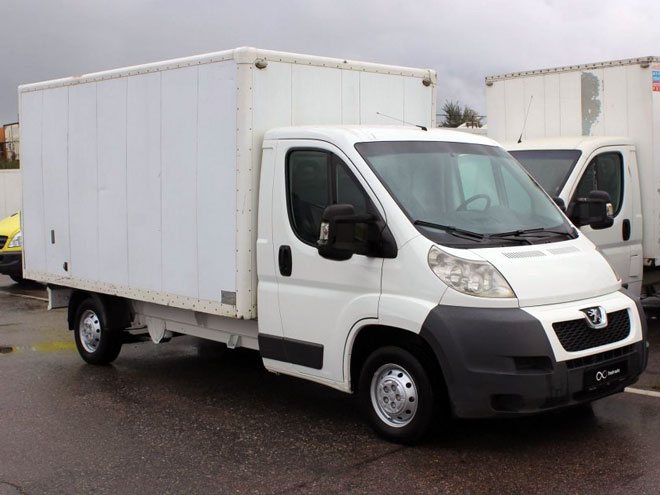
The Peugeot Boxer's fuel tank capacity is 90 liters. The maximum speed of transport is 165 km/h. Fuel consumption on average in the city is 11 liters per 100 kilometers, on the highway – 8.4.
Among cars of this class, Peugeot is the most economical car with a modern environmental protection system.
The Boxer power block is presented in six main versions:
- 2.2-liter diesel with 110, 130 or 150 horsepower.
- 3-liter, diesel with 145, 156 and 177 horsepower.
Changes regarding the exterior and interior of the vehicle took place in 2008 and 2012. The new generation Peugeot has fifty modification options. There is an easy way to find out the technical data of a machine: the information is encrypted in the index. For example: Peugeot Boxer L2H2 2.2 HDi (250) 4 doors. van, 120 l. s, 6 manual transmission, 2006–2014. The index should be read from the final values:
- year of issue. This Peugeot Boxer model was produced from 2006 to 2014;
- gearbox data. Mechanics, 6 stages;
- engine power – 120 hp;
- body type - four-door van;
- engine type – turbo diesel;
- engine capacity – 2.2 liters;
- permissible load height (index H with designation 2). In the example, the average is 1932 millimeters;
- permissible load length (index L with designation 2). Average - 3120 millimeters.
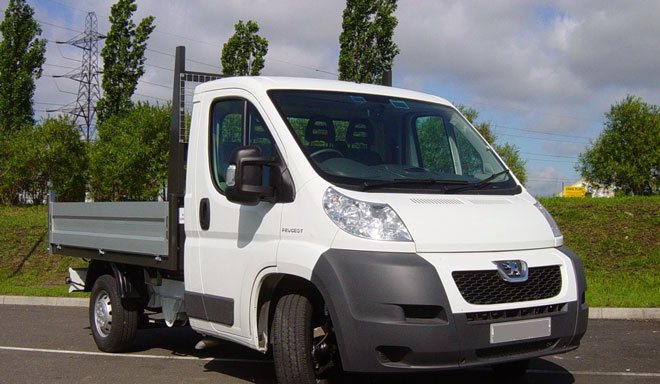
The Boxer has advantages, but drivers also note disadvantages, which include a short manufacturer’s warranty, rapid wear of the chassis and suspension, which is the most repairable component in a car. Advantages:
- comfortable interior;
- minimum fuel consumption;
- high speed;
- load capacity;
- pleasant appearance.
The Boxer's high profitability is noted: the car pays for itself in about 2 years, but maintenance costs and frequent repairs can increase this period to 3-4 years.
Peugeot Boxer Specifications
The main technical parameters are presented in the table:
| No. | Name | Meaning |
| 1 | Body type | Van/Chassis/Combi/Minibus |
| 2 | Dimensions: | |
| Length, mm | 4963 (5413; 5998; 6363) | |
| Width, mm | 2050 | |
| Height, mm | 2522 (2764) | |
| 3 | Wheelbase dimensions, mm | 3000 (3450; 4035) |
| 4 | Car carrying capacity, t | 1–2 |
| 5 | Total weight, t. | 3–4,4 |
| 6 | Permissible volume of cargo transported taking into account all possible modifications, m 3 | 8–17 |
| 7 | Maximum speed, km/h | 165 |
| 8 | Fuel consumption: | |
| Outside the city, l/100 km | 8,4 | |
| City, l/100 km | 10,8 | |
| Mixed conditions, l/100 km | 9,3 | |
| 9 | Fuel tank volume, l | 90 |
| Engine | ||
| 10 | Type | Diesel/petrol unit |
| 11 | Capacity, l | 2,2 (3,0) |
| 12 | Power, hp | 110; 130; 150 (145; 156; 177) |
Engine design features:
| ||

